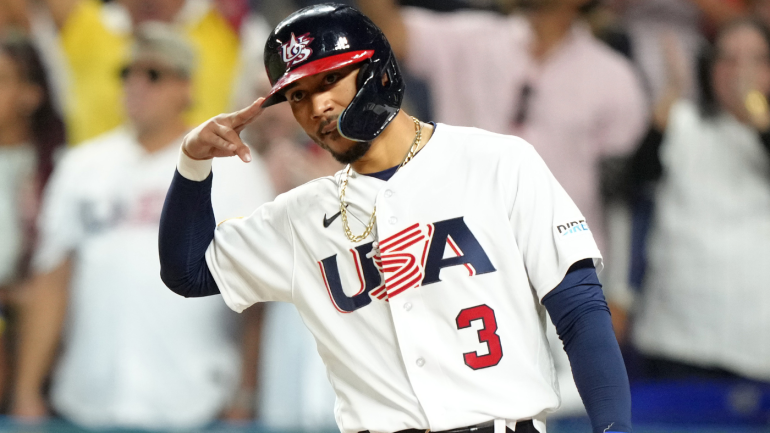On Tuesday night, there will be an amazing final between Team USA and Team Japan.
Tuesday evening’s 2023 World Baseball Classic championship game between Team USA and Japan is scheduled to take place. The WBC championship is up for grabs in just one game. Since Japan won the first two World Baseball Classics in 2006 and 2009, the Americans have a chance to become the first team to win the tournament twice. Japan, the only country to have won multiple WBCs, will be attempting to capture the title and belt for the third time in five competitions.
It’s an interesting clash of strengths in terms of the particular matchup. At this year’s WBC, Japan has the most dominant pitching staff, while this year’s Team USA lineup is unmatched. What then is required for the United States to defend its title and become the second nation to win the WBC twice, after Japan? We’re here to investigate the key issue heading into the crucial match on Tuesday night. From the standpoint of the US, let’s do just that.
1. Get strong (very) early innings from Merrill Kelly
There is no question that the rotation is the weak spot in the American squadron. There is no need to go farther than the fact that right-hander Kelly, who has never been selected to an All-Star squad and who didn’t make his MLB debut until he was 30, will start the championship game. Kelly, though, is a skilled moundsman. Kelly has made 97 starts for the Diamondbacks and pitched to a 109 ERA+ and 3.01 K/BB ratio across portions of four major-league seasons. He made 33 starts last year, which led the NL, and posted a 3.37 ERA/119 ERA+. He was also one of the few pitchers to throw more than 200 innings. Kelly doesn’t have a very strong fastball, but he does have a five-pitch arsenal that is loaded. By just using his go-to pitch, the fastball, 30% of the time, he keeps batters on their toes.
Kelly’s first and only WBC start, which came on March 15 versus Colombia, was uneven. Kelly pitched three innings, giving up two runs on four hits, one strikeout, and two walks. His 61 pitches resulted in 36 strikes. Kelly will undoubtedly face opposition because the Japan offense has a higher profile than Colombia’s. Kelly faced 15 batters against Colombia, so Mark DeRosa, the manager, ought to try to limit that number on Tuesday night. While hitters typically benefit from growing exposure to and familiarity with a beginning pitcher during a given start, Kelly should only go through the opposing order once. That is a workable plan given the state of the American bullpen.
2. Take full advantage of the rested bullpen
In no particular order, the American relief pitchers include Devin Williams, David Bednar, Ryan Pressly, Adam Ottavino, Jason Adam, and Kendall Graveman. That’s a lot of bat-missing and run-prevention qualities when applied to a wider sample. The American bullpen is also well rested going into the championship game.
Team USA was taking a nap on Monday night in Miami when Japan won a nail-biting, close-fought match. Also, the final score accurately reflects the low-stress nature of the U.S.’s 14-2 semifinal victory over Cuba on Sunday. Under normal conditions, Miles Mikolas would be the starter. However, he pitched four innings of relief, and only lefty Aaron Loup was a real reliever. Loup only threw six pitches. Since Saturday’s game against Venezuela, none of the main American relievers have pitched, and none have been particularly hard at work. Williams tossed the most pitches of any American reliever in that quarterfinal victory with 19 pitches.
DeRosa now has the onus of being aggressive with his Kelly hook. Preventive in nature is required; in other words, acquire your starter before there are any warning symptoms of difficulty, not after. Furthermore, there is no justification for Merrill to face the Japan order more than once considering the strength of the U.S. pen and Merrill’s pitching limitations.
3. Jump on the lefty starter
Left-hander Shta Imanaga of Japan will get things going. Imanaga, 29, is a skilled pitcher in Japan, but he is not Ohtani or Roki Sasaki. He has a 3.01 ERA and a 3.69 K/BB ratio in parts of seven seasons with Yokahama. He’s a southpaw, which may be even more advantageous from a US perspective.
If you will, think about the lineup that DeRosa used on Sunday to take on Cuban left-hander Roenis Elas:
- Mookie Betts, RF
- Mike Trout, CF
- Paul Goldschmidt, 1B
- Nolan Arenado, 3B
- Kyle Schwarber, LF
- Will Smith, C
- Pete Alonso, DH
- Tim Anderson, 2B
- Trea Turner, SS
Naturally, there are many All-Stars in that specific cup, but it’s also noteworthy that only one batsman, Kyle Schwarber, the reigning NL home run champion, is platoon-disadvantaged. It should go without saying that asking a left-handed starter to manage a lineup that has right-handed players like Betts, Trout, Goldschmidt, Arenado, Smith, Alonso, Anderson, and World Baseball Classic hero Turner is “criminally ridiculous.”
Therefore it’s crucial that all of those right-handed hitters get on Imanaga quickly before Japan manager Hideki Kuriyama gets a chance to pitch to one of his right-handed relievers (Shohei Ohtani perhaps?) and flip the platoon advantage.
You may have guessed by now that “early” figures count a lot in this case. The U.S. must hang runs on Imanaga early and deliver the cowhide to the U.S. bullpen at the same time.
